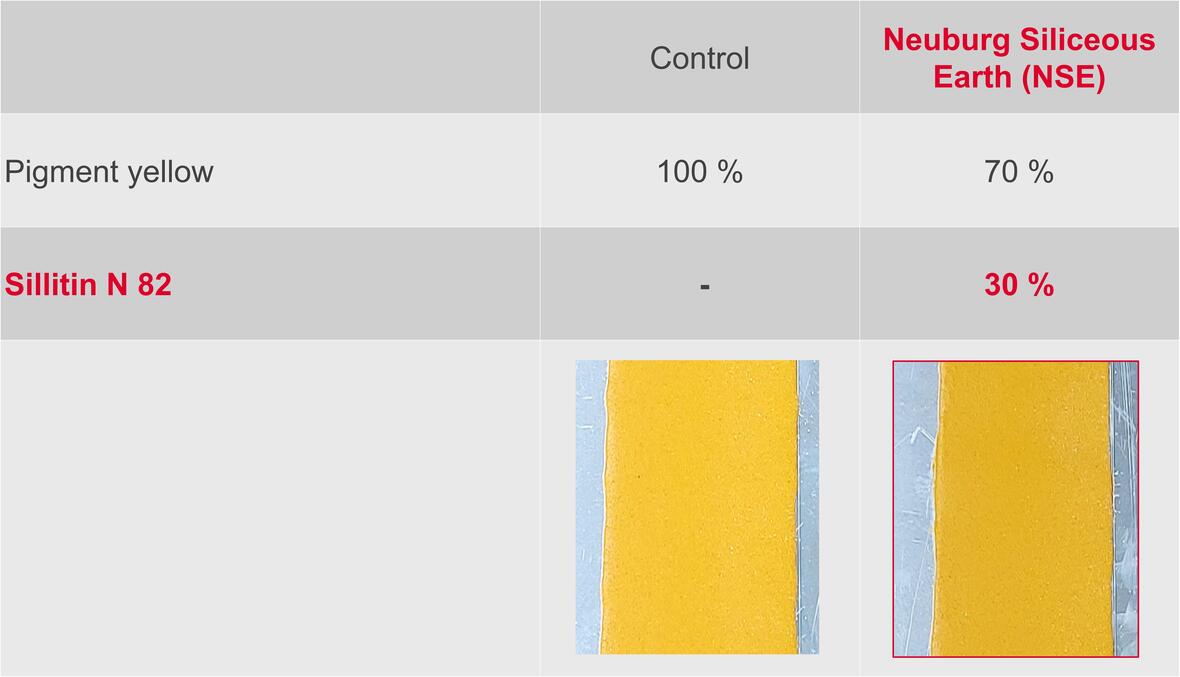
The exchange ratio is 1:1 by weight. Due to a higher oil number and a lower density of SILLITIN N 82 compared to the pigment, the extension will lead to a slightly higher viscosity. In many cases producers tend to increase the melting temperature to achieve better flow properties after extension. However, higher temperature will lead to resin degradation and therefore yellowing of the product. To overcome flow issues it is recommended to slightly increase the plasticizer and/or wax concentration. The melt temperature, however, must not be increased.
FORMULATION
Typical HOT MELT ROAD MARKING yellow formulation with C5 resin, plasticizer, PE wax and calcium carbonate
PRODUCT INFORMATION
RESULTS AND SUMMARY
Substituting 30 % pigment with SILLITIN N 82 in yellow hot melt road marking paints leads to a clear cost reduction. Additionally a tendency towards better adhesion of the glass beads and an improved abrasion resistance can be expected .

